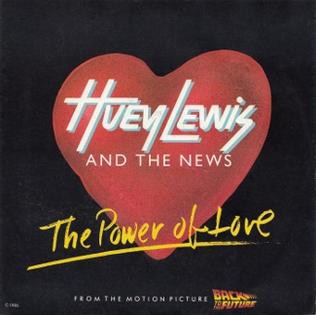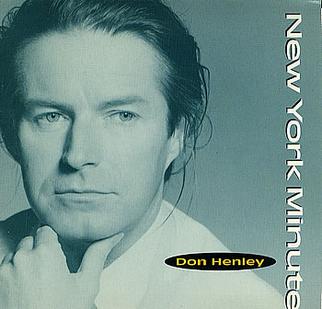 Joe Walsh’s “Life of Illusion,” released in 1981 on his solo album There Goes the Neighborhood, is a masterclass in blending catchy hooks, reflective lyricism, and virtuoso guitar work. Known for his contributions to the Eagles as well as his solo career, Walsh had already established himself as a musician who could combine technical prowess with a playful, witty sensibility. “Life of Illusion” is a track that exemplifies this balance, combining narrative depth with an accessible, radio-friendly rock sound. Its enduring popularity, both as a solo track and a touchstone of Walsh’s larger oeuvre, speaks to its dual appeal: it is both entertaining and intellectually engaging, a song that rewards repeated listening while also functioning as a succinct, immediately memorable rock single.
Joe Walsh’s “Life of Illusion,” released in 1981 on his solo album There Goes the Neighborhood, is a masterclass in blending catchy hooks, reflective lyricism, and virtuoso guitar work. Known for his contributions to the Eagles as well as his solo career, Walsh had already established himself as a musician who could combine technical prowess with a playful, witty sensibility. “Life of Illusion” is a track that exemplifies this balance, combining narrative depth with an accessible, radio-friendly rock sound. Its enduring popularity, both as a solo track and a touchstone of Walsh’s larger oeuvre, speaks to its dual appeal: it is both entertaining and intellectually engaging, a song that rewards repeated listening while also functioning as a succinct, immediately memorable rock single.
The song opens with a synthesizer-driven riff that immediately sets a slightly surreal tone, signaling that this is not a conventional rock song. The keyboard line, bright and somewhat whimsical, creates a layered backdrop that complements Walsh’s guitar work rather than competing with it. This instrumental interplay is key to the song’s charm. Walsh’s guitar, characterized by his signature fluidity and tasteful bends, enters with precision, adding melodic depth without overpowering the rhythm section. The result is a sonic landscape that feels simultaneously expansive and cohesive, a blend of the layered textures of progressive rock and the accessibility of mainstream pop-rock.
Lyrically, “Life of Illusion” is both introspective and satirical. Walsh navigates themes of fame, self-reflection, and the absurdities of modern life with a sardonic wit. The song begins with a sense of nostalgia, recalling the passage of time and the illusions one carries through life. Lines such as “People say you’re gonna come back / To haunt me” and “People say you’re gonna have a life of illusion” explore the tension between perception and reality, public expectation and personal truth. Walsh’s lyrics often reflect a self-aware humor, a recognition of life’s absurdities that never descends into cynicism. This playful yet poignant approach allows listeners to connect on multiple levels: one can enjoy the song as a catchy rock track while also appreciating its subtle commentary on fame, identity, and the human tendency toward self-deception.
Musically, the song is emblematic of Walsh’s ability to balance technical skill with compositional clarity. The rhythm section, consisting of bass and drums, maintains a driving yet unobtrusive groove, allowing the guitar and keyboard parts to shine. The drum pattern is particularly notable for its tight, precise execution, providing momentum without ever feeling overbearing. Meanwhile, the bass lines provide melodic counterpoint, supporting the harmonic structure while reinforcing the song’s upbeat, forward-driving energy. This interplay between instruments creates a sense of cohesion that is both sophisticated and accessible, demonstrating Walsh’s experience as a musician comfortable in both solo and collaborative contexts.
The vocal delivery in “Life of Illusion” is another crucial element of the song’s enduring appeal. Walsh’s voice carries a natural warmth and a relaxed, conversational tone that complements the lyrical content. His phrasing emphasizes the song’s humorous and reflective qualities, conveying a sense of ease and authenticity. There is a subtle irony in the way Walsh delivers certain lines, reinforcing the thematic tension between appearance and reality. The vocals, combined with the song’s layered instrumentation, create a rich emotional texture that is at once engaging and thought-provoking. Listeners are drawn into Walsh’s perspective, invited to reflect on their own experiences with illusion and reality while being entertained by the song’s wit and charm.
Structurally, “Life of Illusion” is concise yet dynamically engaging. The verses and choruses are clearly delineated, allowing the listener to follow the narrative easily while also enjoying the musical intricacies embedded in each section. The chorus, with its repeated refrain and singable melody, anchors the song thematically and melodically, making it instantly memorable. Interspersed guitar licks and keyboard flourishes provide additional interest, preventing the track from feeling repetitive despite its brief runtime. This structural economy is characteristic of Walsh’s songwriting: he delivers musical complexity and lyrical nuance without overwhelming the listener, striking a balance that enhances both accessibility and artistic integrity.
“Life of Illusion” also stands out for its production quality, which reflects the early 1980s rock aesthetic while maintaining a timeless appeal. The mix emphasizes clarity and separation between instruments, ensuring that each element of the arrangement is discernible. The synthesizer tones, guitar textures, and vocal lines occupy distinct sonic spaces, creating a layered but coherent sound. This attention to production detail enhances the song’s overall impact, allowing the listener to appreciate both the subtle interplay of instruments and the immediacy of the vocal delivery. The production reinforces the song’s thematic concerns, with bright, almost ethereal tones underscoring the lyrical exploration of perception versus reality.
Thematically, the song resonates because of its exploration of human vulnerability and resilience. Walsh captures the tension between public image and personal reality, fame and anonymity, expectation and desire. The lyrics address the illusions that people construct in their lives, whether to protect themselves, to entertain others, or simply to navigate the complexities of existence. By framing these ideas within a lighthearted, melodic rock context, Walsh makes profound observations accessible to a wide audience. This combination of thematic depth and musical appeal ensures that “Life of Illusion” remains relevant decades after its initial release.
In live performance, “Life of Illusion” often takes on an added dimension. Walsh’s guitar solos, which are technically impressive yet emotionally expressive, transform the song into a dynamic, interactive experience. The audience’s response—singing along with the chorus, reacting to the witty lyrics, and appreciating the instrumental flourishes—creates a communal atmosphere that reinforces the song’s enduring popularity. Walsh’s ability to balance virtuosic musicianship with a sense of fun and engagement makes the song a highlight in his live repertoire, whether performed solo or as part of an ensemble.
The cultural impact of “Life of Illusion” extends beyond its initial release. The song has been used in films, television, and advertising, often to evoke a sense of nostalgia or to underscore themes of ambition, self-reflection, or comedic irony. Its catchy melody and memorable lyrics make it versatile for multiple contexts, while its underlying thematic concerns give it a depth that elevates it above mere background music. The track has also influenced subsequent generations of rock and pop artists, who have drawn inspiration from Walsh’s ability to combine technical skill with narrative wit and melodic accessibility.
“Life of Illusion” also serves as an excellent example of Walsh’s individual style as distinct from his work with the Eagles. While his contributions to the Eagles are characterized by ensemble interplay and a smooth, polished rock sound, his solo work—particularly on this track—allows his playful, experimental, and sometimes sardonic personality to emerge more fully. The song reflects his comfort with blending humor and introspection, technical skill and melodic simplicity, providing insight into his artistic identity outside the group context. This duality—balancing solo expression with collaborative sensibility—underscores Walsh’s versatility as a musician and songwriter.
One of the most striking aspects of the song is its melodic inventiveness. Walsh’s guitar lines, both rhythm and lead, weave around the vocal melody with sophistication, adding subtle harmonic interest without ever feeling overdone. The keyboard parts, too, provide counter-melodies and harmonic texture that enrich the overall soundscape. These melodic elements contribute to the song’s sense of forward momentum and lift, enhancing the listener’s engagement. They also serve to reinforce the lyrical themes: the light, buoyant instrumentation contrasts with the reflective and sometimes sardonic content, creating a tension that mirrors the illusions and realities described in the lyrics.
“Life of Illusion” is also remarkable for its economy of storytelling. Walsh conveys a complex narrative about perception, identity, and self-awareness within a very short runtime, demonstrating his ability to blend storytelling with musical innovation. The song’s verses progress logically, each one adding nuance and perspective, while the chorus distills the central thematic message into a memorable, repeated refrain. This narrative conciseness, combined with musical sophistication, ensures that the song remains compelling even after repeated listens, revealing new subtleties with each play.
The song’s combination of humor, self-awareness, and musical skill is part of what makes it enduringly appealing. Walsh’s wry observations about life, fame, and personal growth are delivered with a levity that prevents the song from becoming overly heavy or self-serious. At the same time, the intricate musical arrangements demonstrate his commitment to craft and attention to detail. The balance between these elements—humor and skill, accessibility and complexity, playfulness and reflection—is a hallmark of Walsh’s approach to songwriting and is particularly evident in “Life of Illusion.”
The enduring legacy of “Life of Illusion” is evident in its continued airplay, its frequent inclusion in Walsh’s live setlists, and its resonance with fans old and new. It is a track that manages to be both of its time and timeless: a product of early 1980s rock aesthetics, yet thematically and musically relevant decades later. Its accessibility, combined with its thematic sophistication, ensures that it appeals to casual listeners and dedicated fans alike, making it a defining piece of Walsh’s solo career.
In conclusion, Joe Walsh’s “Life of Illusion” is a quintessential example of his artistry, blending melodic ingenuity, lyrical wit, and technical skill into a single, cohesive work. Its themes of perception, self-reflection, and the absurdities of modern life are delivered with humor, clarity, and musical precision. The song’s enduring appeal lies in its ability to entertain, provoke thought, and resonate emotionally with listeners, making it a highlight of Walsh’s solo catalog and a touchstone of early 1980s rock. Decades after its release, “Life of Illusion” continues to charm, inspire, and captivate, standing as a testament to Joe Walsh’s unique talent as a songwriter, guitarist, and storyteller.
Track Highlights:
-
Infectious synthesizer and guitar interplay creating a whimsical yet grounded sonic landscape
-
Lyrics exploring self-reflection, fame, and the illusions we carry through life
-
Joe Walsh’s expressive vocal delivery and signature guitar style
-
Concise, memorable song structure with a chorus that anchors the narrative
-
Enduring influence and cultural resonance across radio, film, and live performance
“Life of Illusion” remains one of Joe Walsh’s most celebrated works, a song that demonstrates the perfect fusion of technical mastery, narrative insight, and melodic charm. It is a timeless piece that continues to engage audiences, showcasing Walsh at his most inventive, witty, and musically compelling.


